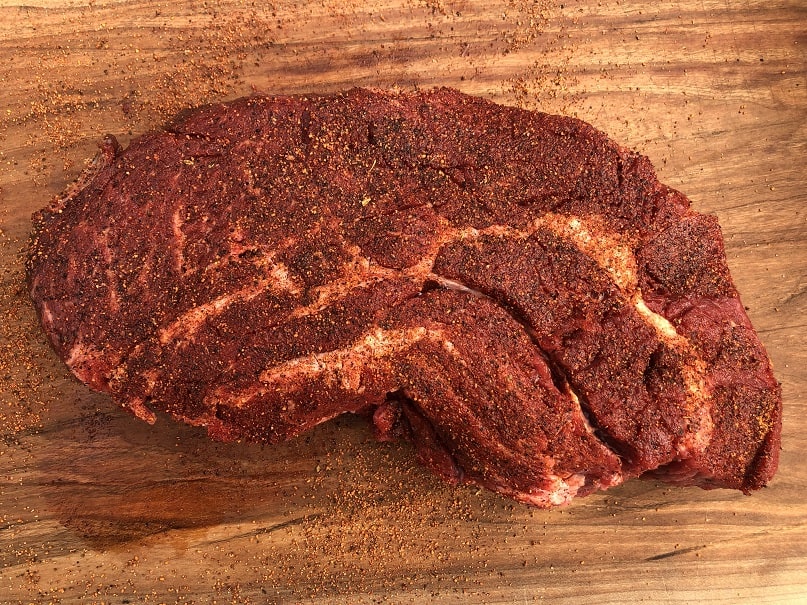To be a top chef with a penchant for steaks, hamburgers, and the like – you simply cannot do without understanding the differences between these two cuts. So, let’s dive in.

The Main Differences Between Chuck vs Brisket are as Follows:
1 . Texture & Fat
Beef brisket typically comes from the lower chest area of the animal and contains a high fat to meat ratio. Brisket tends to be tougher and needs to be cooked longer before it will become tender.
A chuck roast is taken from the shoulder of the cow. It has less fat than brisket and more connective tissue since it’s from the shoulder joint. That means it’s going to be even tougher by default.
2 . Flavor
Because brisket is fattier, the flavor is stronger and sometimes described as tangy. The type of fat we find in a chuck roast makes it more flavorful or rich by comparison.
3 . Preparation
Brisket should be slow-cooked in an oven or slow cooker. Ideally, it should be cooked at relatively low temperatures for between 8 and 10 hours. Use beer or a liquid beef broth to keep it moist.
Chuck roast needs to be seared on all sides prior to cooking to give it its characteristic crispy edges. The searing should be done with very high heat for three to five minutes per side. Then simmer it at low temperature for between 2 and 4 hours.
Let’s look at each of these differences in more detail!
More About Texture & Fat
Cuts from both the shoulder and the lower chest are tough and fatty, which is part of the reason these two types of cuts are often confused. They come from parts of the cow that are both load-bearing, and that do a lot of physical work. That makes them tough. It also makes them nutrient-dense.
The most important differences might come down to the fact that the chuck roast contains more connective tissue. Then again, the nature of the fat each cut contains is also unique. The fat contained in the brisket cut has more in common with abdominal fat which makes it somewhat richer. The fat you find in the chuck roast is a sort that takes longer to develop, and this comes through in the flavor.
More About Flavor
The chuck roast is known to be among the most flavorful. It’s called chuck because we get the term from chuck wagons of days gone by which often contained cooking pots, the contents of which were dispersed among working crews and traveling families. The brisket is also a very flavorful cut, but the higher visceral fat content gives it a more indulgent flavor, but of course, that’s deeply subjective.
More About Preparation
Average cook times are between 8 to 10 hours for brisket and 2 to 4 hours for chuck. If you’re new to working with large cuts of beef, then just keep in mind that these cook times will vary depending on the size of the cut. For example, a brisket weight between 5 to 7 pounds should be cooked for between 5 and 7 hours at 275 degrees Fahrenheit. A cut weighing between 12 to 18 should be cooked for 10 to 12 hours and 250 degrees Fahrenheit.
A chuck roast is cooked for shorter amounts of time at higher temperatures. For example, a 3.5-pound cut should be cooked for 2 to 3.5 hours at 275 degrees Fahrenheit.
Many chefs will tell you that they can tell whether or not a cut is done cooking just by looking at it. This is both untrue and unsafe. Be sure to use a cooking thermometer to make certain they have reached their finishing temperature. A large chuck or brisket will have a finishing temp of between 195 and 205 degrees.